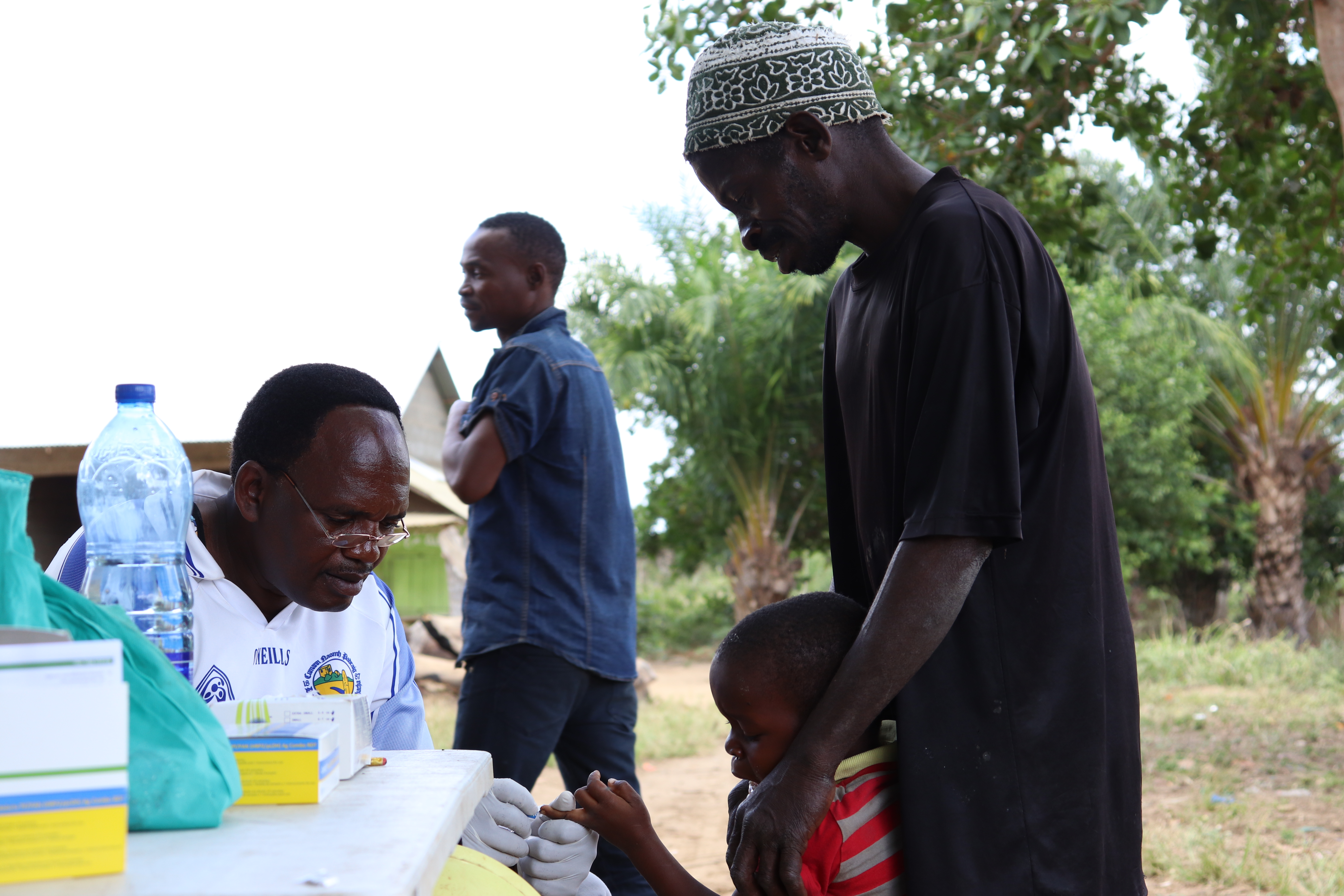
MALARIA: New approach successfully cuts malaria cases in Tanzania

A groundbreaking study conducted in three districts of Tanzania has demonstrated the effectiveness of a new method to control malaria. The method, known as the 1,7-mRCTR approach, reduced malaria incidences by 17%, according to findings published in the Infectious Diseases of Poverty journal.
The study, built on a prior China-UK-Tanzania pilot study, focused on the implementation and impact of the novel approach – 1,7-malaria Reactive Community-Based Testing and Response (1,7-mRCTR). It was conducted for two years from July 2019 to October 2021 in Kilwa district in Lindi region and Rufiji and Kibiti districts in Pwani region – areas characterized by moderate to high malaria transmission.
Learn more about the China-UK-Tanzania study here.
Unique, promising approach
According to the scientists involved in the study, hailing from the US, China, Tanzania and Switzerland, the evidence obtained from the study findings provides “fresh evidence on the of community-based reactive approaches in moderate- to high-endemicity areas and demonstrated the potential of South-South cooperation in tackling global health challenges.”
“The 1,7-mRCTR approach is a unique intervention that has demonstrated promising results in reducing malaria prevalence… Investments in strengthening the routine surveillance infrastructure are essential to support the scale-up of new strategies to better identify malaria hotspots and target interventions at the village level.”
How the 1,7-mRCTR works
The 1,7-mRCTR approach is a community-based strategy that involves conducting malaria tests using rapid diagnostic tests. All confirmed malaria cases are then reported at health facilities within one day initiating immediate treatment. This is followed up by conducting follow-up community-wide testing in selected villages within seven days to slow malaria transmission.
The villages with the highest malaria incidence were largely targeted. They were identified based on surveillance data collected from health facilities after which community-based healthcare workers conducted screening and treatment of malaria infections, allowing for a more focused and responsive intervention.
This approach has been used in China’s national malaria elimination programme and has effectively nearly eliminated domestic cases. In China, professionals developed the ′1-3-7′ approach. In this surveillance system, confirmed cases are reported within one (1) day, the origin - imported or domestic - is investigated within three (3) days, and appropriate intervention to reduce the chance of onward transmission is done within seven (7) days.
Success of the approach
A total of 244,771 community-based malaria rapid tests were completed in the intervention areas during the study period, with an average of 3.85 rounds of 1-7mRCTR conducted in each intervention village.
Malaria incidence in the intervention areas dropped from 27.4% to 11.7%. In comparison, control areas experienced a decrease from 26.0% to 16.0%. The 1,7-mRCTR approach was associated with a substantial 4.5-percentage-point decrease in malaria prevalence, equivalent to a 17% reduction. According to scientists, the study's results aligned with another trial in Zambia, where a similar intervention resulted in a 17% decline in outpatient malaria cases.
Notably, in the district of Rufiji, where larviciding was additionally provided, the impact of 1,7-mRCTR approach was even more pronounced with a remarkable 63.9% decline in malaria incidences, underscoring the effectiveness of the combined interventions.
“Our finding that the largest declines in malaria prevalence (63.9% decline) were seen in Rufiji, a low-endemic district, suggests that the 1,7-mRCTR approach may be most effective when used in lower transmission areas and combined with larviciding… It also echoed the WHO guidelines that recommend adding supplementary programming, such as larviciding, to the implementation of surveillance strategies.”
Overall, the scientists noted that despite facing challenges such as interruptions due to the COVID-19 pandemic and supply chain issues, the study demonstrated the effectiveness of community-based reactive approaches in moderate- to high-endemicity areas.
Influencing future strategies
Despite the promising results, the scientists recommend further research to better understand the effectiveness of the 1,7-mRCTR approach in moderate to high transmission settings.
Moreover, they note that implementing the 1,7-mRCTR approach can help overcome common challenges in South-South cooperation initiatives exemplifying opportunities for malaria-endemic countries to work together with countries that have been recently successful in eliminating malaria.
“As China plays a growing role in global health governance and bilateral health development cooperation, the implementation of the 1,7-mRCTR approach in Tanzania serves as an example of overcoming common challenges in South-South cooperation, such as poor coordination, inadequate political commitment, language barriers, and inadequate financing, while contributing to the evidence on how to not only implement such initiatives but also how to monitor and evaluate their impacts.”
In conclusion, the scientists emphasize the importance of strengthening routine surveillance infrastructure and leveraging community-based healthcare worker networks for effective implementation.
Ifakara scientists in the study
A team of Ifakara Health Institute scientists led by Yeromin Mlacha contributed to the study. They include Salim Abdulla, Muhidin Kassim Mahende, Tegemeo Gavana, Hajirani Msuya, Silas Temu, Honorati Masanja, Fadhila Kihwele, Godlove Chila, Mihayo Michael and Prosper Chaki.
Other contributors are from Harvard T.H. Chan School of Public Health, USA; Chinese Center for Disease Control and Prevention, China; Africa Academy for Public Health, Tanzania; Muhimbili University of Health and Allied Sciences, Tanzania; Global Malaria Programme-WHO, Switzerland; Bentley University, USA; Tsinghua University, China; and University of Alabama at Birmingham, USA.
Read full publication here.
